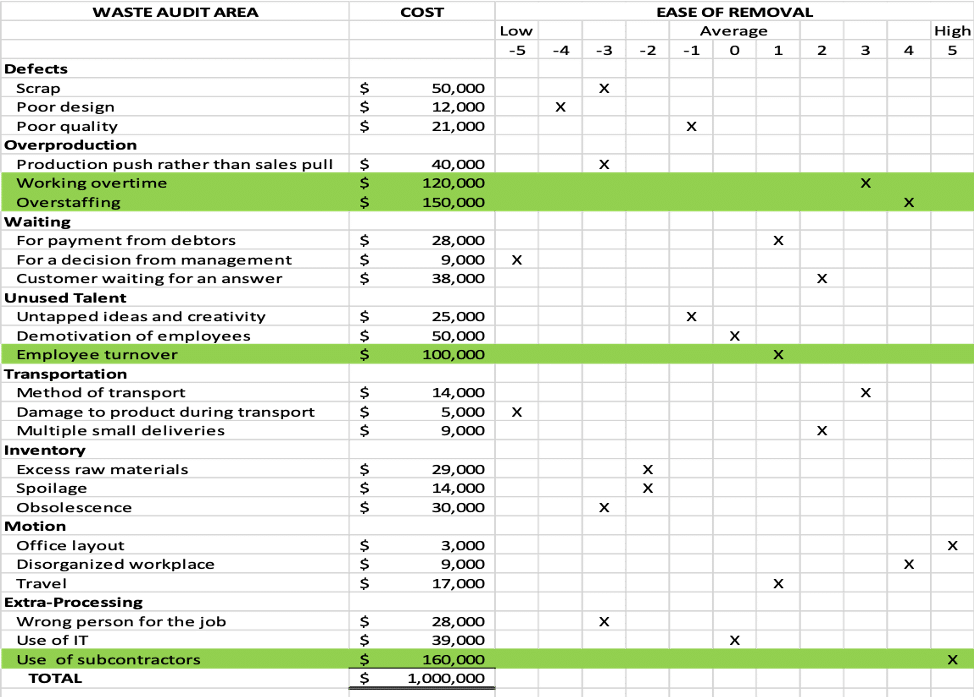An efficient route to profitable growth for many businesses lies in a waste audit. As I shared in my previous article, profitable growth is achieved by eliminating waste and minimizing overspending within an organization. We covered the helpful DOWNTIME list of eight common types of waste and discussed why it’s worth pursuing both top-line and bottom-line growth to achieve long-term business health.
Below, I explore a case study of a successful waste audit and share some helpful strategies for seeing results from your company’s first one.
A Waste Audit In Practice
A waste audit sounds good in theory, but what about in practice? Working with a professional service company as their business advisors, we ran a waste audit and realized they were spending a considerable amount every year on subcontractors.
While hiring the subcontractors made the managers’ lives easier, it also cost them a fortune (this fell into the “extra processing” waste category, in case you were curious). We worked with them to help improve their operations. We found that many full-time employees were being overscheduled to ensure project completion, but at the cost of efficient time management. In this case, properly budgeting the project and scheduling resources freed up hours that could be used on other projects.
Proper utilization of the company’s existing resources decreased the need to hire subcontractors. The company initially had three subcontractors. Now, two years later, they only have one. This small change saved the company thousands of dollars annually, and therefore increased profitability.
One subtle reduction in waste created thousands of dollars in profit without having to increase revenue. That is the art of waste auditing. It’s not always about massive sweeping changes. Sometimes it’s about smaller, attainable adjustments that can make a significant impact.
The Waste Audit Tool
When we’re conducting a waste audit with our clients, we use a waste audit tool, shown below. In essence, this involves creating a waste statement for one year. List each waste and how much you estimate it costs your company annually. If you don’t know the exact number, you can simply rank the dollar amount from low, medium, to high.

For each item you identify as potential waste, rank the “ease of removal” by considering how easy it is to eliminate that waste from a scale of -5 to +5 (+5 being the easiest). This method helps to identify two things:
- Which wastes are costing the most money?
- Which wastes are the most manageable problems to fix?
We’ve been doing this a while, and we’ve found that the best approach isn’t always to handle the most expensive wastes first. Instead, start by tackling the wastes that are easier to fix. Organizational behavior changes are tough. You don’t want to demotivate your staff with a challenging, disruptive change that has a slim chance of success.
After a few successes, then tackle the larger projects. Going for the lower-hanging fruit is a fantastic way to ease into profitable growth.
Unsure how to start implementing your waste audit findings? Here’s a quick breakdown of our process:

Become More Profitable Today
As business advisors and CPAs, we’re experts at waste audits—as a complement to our assurance services. If you want to determine whether your company is suffering from unnecessary waste and work on increasing profit, we would love to speak with you to learn more about your business and identify areas where our business advisors could potentially offer solutions.
